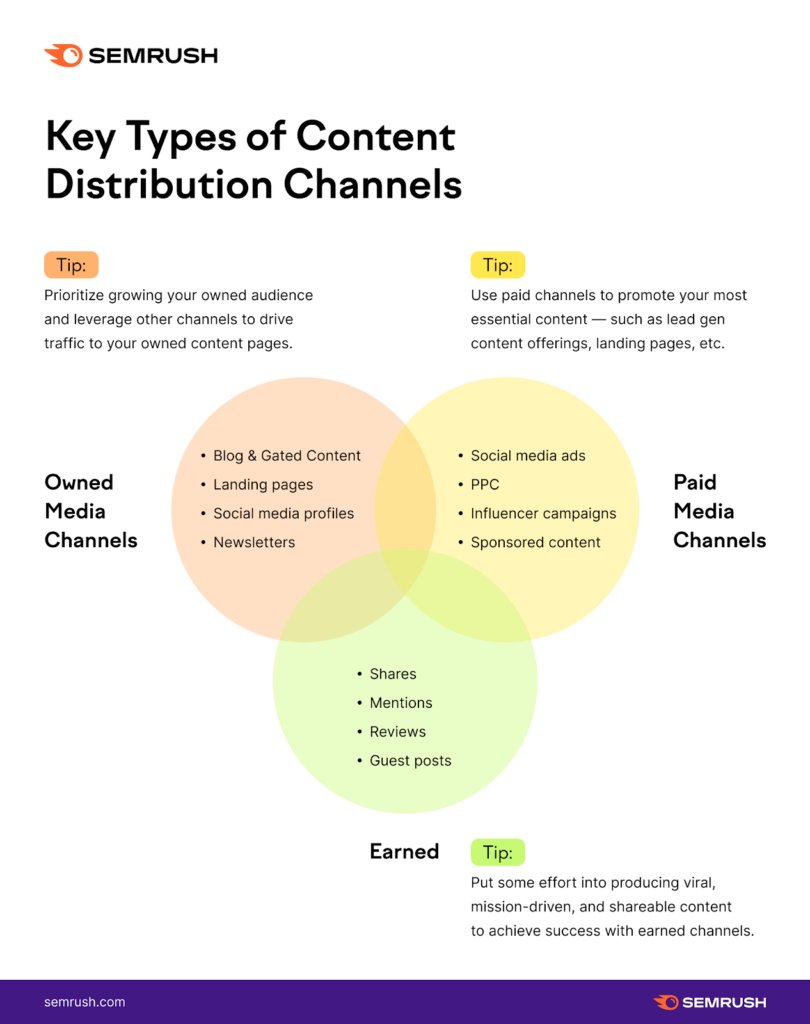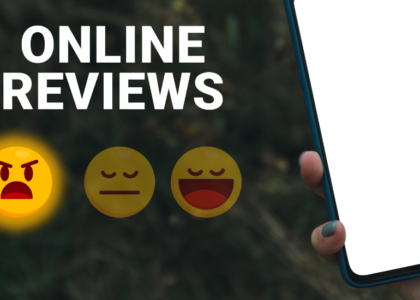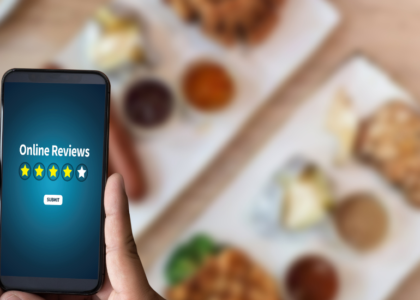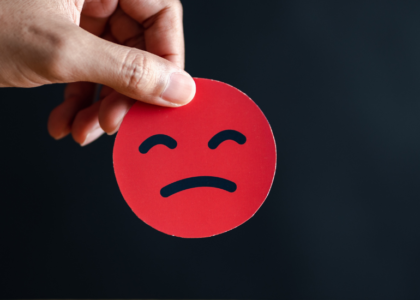Content distribution is the process of publishing and promoting your content through various channels and media formats. This can include your website, ads, your social media channels, email newsletters, and other channels we’ll explore in a moment. But to start, we’ll discuss the importance of content distribution and why you should care about this strategy in the first place.
Without an effective means to share, amplify, and promote your content to the world, it’s unlikely to reach new audiences.
Think of it this way: Would you have ever heard of or read the books of favorite authors if they didn’t have a company to publish, ship, and sell their works at your local bookstore?
Probably not. Unless your brand is already widely known, it’s nearly impossible to reach your intended audience and get in front of people who’ve never heard of you before.
In other words, content distribution helps you get your content in front of the right audience via the right channel and at the right time.
Types of Content You Can Distribute
Before evaluating the content distribution platforms, consider all the content assets you already have. This can include:
- Blog posts
- White papers and guides
- Research studies
- Pillar pages, research, and other long-reads (e.g., how-to guides)
- Case studies and success stories
- Infographics
- Checklists
- Ebooks and templates
- Articles (non-blog posts)
- Product landing pages
- Videos
- Podcast episodes
- Newsletters
Pick your promotional channels wisely. A good rule of thumb is to define your expectations as goals and key performance indicators (KPIs).
For example, if you want to increase brand awareness, you can focus on shares, organic traffic, keyword rankings, and backlinks.
Three Kinds of Distribution Channels To Focus On
Content distribution channels are the platforms and media where you share your content.
Specific channels may vary depending on your resources and audience specifics. In general, though, we can divide them into three broad categories:
- Owned Channels
- Earned and Shared Channels
- Paid Channels
Owned Channels
Owned channels are the content platforms and channels that belong to your company or brand. These channels are central to any brand. They are owned by you, and you alone have full control over the content. Why is this important? Because you can remove or update copy, tweak it to improve your performance, and keep tabs on your backlink profile and interlinking strategy. In addition, you can communicate directly with your “owned” audience and nurture these contacts, moving them down the funnel.
This could include:
- Blogs
- Gated content
- Landing pages
- Social media profiles
- Newsletters
- Mobile apps
Earned or Shared Channels
Earned or shared channels are those that belong to external third parties who have shared content about your brand. Think of bloggers, social media influencers, journalists, or review sites. While posting your content on these sites is free, you don’t own the content.
If your earned platform is an influencer, industry thought leader, or top media publisher, getting traction here is worth it. You get your brand in front of a massive audience who’s already loyal to or engaged with that media channel. The downside is that these channels give you less control because the resource you publish your content on doesn’t belong to you. That means it’s harder to review outdated content, track its performance, and convert users into leads. Another issue is that the owner can decide to take down that content at any time.
Examples include:
- Shares
- Mentions
- Reviews
- Guest posts
Paid Channels
Paid channels are pay-to-play. In exchange for promoting your content on an external site, you pay a fee. These channels might be called the most challenging ones, as using them requires careful ROI forecasting and budget planning. On the other hand, they offer you an opportunity to kickstart a promotional campaign in a day and get quick, measurable results affecting the bottom line. This can include various platforms such as:
- Paid ads
- Social media ads
- Sponsored content
- Influencers or reviewers who are paid to speak about your brand
To memorize this concept more effectively, save and share this infographic:

How to Choose Between Content Distribution Channels
If you’re wondering how, where, and when to promote your content, there are a few factors to consider.
Paid channels generate results quickly but require ongoing investment to sustain growth. The second you turn off the ad spend, you’ll see an immediate downturn in traffic, reach, and engagement.
Organic channels, both owned and earned, take longer to see results. However, those results will be sustainable and more stable.
Remember that building a loyal fanbase doesn’t happen overnight. It takes time. The best way is to strike a healthy balance between paid and organic distribution channels.
To simplify the process of choosing your optimal channels, we’ve prepared some comparisons below. There, you’ll find detailed information on what types of content are distributed on those channels, target KPIs, and other important metrics to keep track of.
Distribute Your Content Wisely To Promote Growth
There’s no one-size-fits-all technique in content distribution. That’s why acting without a strategy is a waste of both your money and your effort.
However, when done right, it won’t take long to see the results you want. Here are some final tips that will point you in the right direction:
- Don’t be afraid to expand to channels you haven’t used before—they may have great potential for your brand
- Use as much automation as possible to free up time for creativity
- Always optimize your content to make it easy to find and read, no matter where you publish it
Don’t let your incredible ideas go unseen—embrace a content distribution strategy that reaches your audiences and builds long-term brand loyalty.




